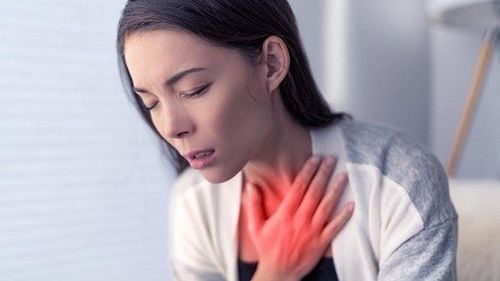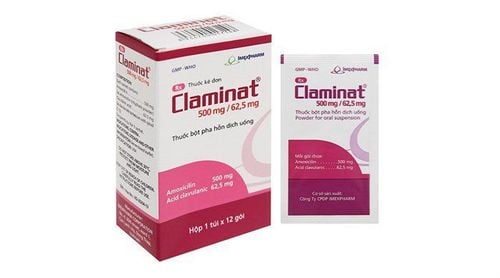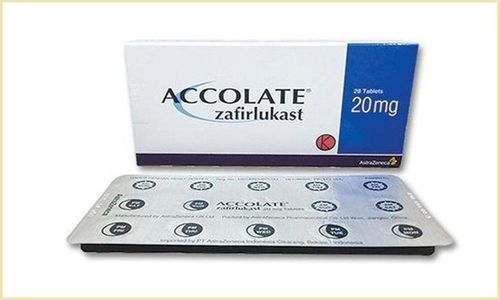This is an automatically translated article.
When suffering from chronic lung disease, the patient tends to rely heavily on drugs, but non-drug treatment plays an important role in supporting the patient.
1. Definition of chronic lung disease
Chronic lung disease includes many different types of respiratory diseases, all of which are characterized by lung disease that has lasted for more than 3 months in a year and usually lasts for at least 2 years or more. Chronic lung disease rehabilitation mainly refers to the 2 most common chronic lung diseases:
1.1. Asthma
Asthma (different from chronic obstructive pulmonary disease - COPD) is a condition in which shortness of breath occurs due to bronchospasm, which narrows the passage of oxygen to the lungs.
Asthma is a fairly common disease in the world. In Vietnam, the rate of asthma is 1% in rural areas and 2% in urban areas of the total population. Of all lung diseases, bronchial asthma accounts for 18.7%. More than 50% of patients with asthma have asthma before the age of 10, men often have asthma more often than women.
1.2. Chronic bronchitis
Chronic bronchitis is a long-lasting inflammation of the bronchial mucosa, leading to increased mucus secretion, causing cough, sputum, airway obstruction and other respiratory disorders. The characteristic feature of cough episodes in chronic bronchitis is that they usually last for at least 3 months per year and occur for at least 2 consecutive years.
Chronic bronchitis is a fairly common disease in many countries, in Vietnam up to 12% of chronic bronchitis patients have to be treated inpatient at the respiratory department.
2. How does chronic lung disease affect patients?
Chronic lung disease affecting the respiratory process: Constriction, narrowing of the bronchi, increased secretion of viscous sputum in the respiratory tract are factors that contribute to the patient's difficulty in breathing, causing lack of oxygen supply to the muscles. organs, especially the brain. Bacterial superinfection: Exacerbations of bronchial asthma or chronic bronchitis, if repeated many times, increase the risk of superinfection and worsen breathing difficulties. Chronic lung disease affects work: People with chronic lung disease have a reduced ability to work both intellectually and physically. Shortness of breath is the main cause that limits the patient's ability to move and work. Chronic lung disease affects learning: Shortness of breath, lack of oxygen in the brain will reduce the patient's ability to concentrate and pay attention. Affects psychology and emotions: The patient has limited health, so psychologically and emotionally, it will be affected, such as being prone to depression, irritability or illness anxiety disorder. Chronic lung disease affects society and family: Chronic lung disease is a factor that causes patients to reduce or lose their ability to participate in family and community activities. In particular, they tend to limit communication, even creating distance with people around.

Bệnh phổi mãn tính ảnh hưởng đến quá trình hô hấp
3. Causes of chronic lung disease and ways to prevent it
3.1. Causes of chronic lung disease
Asthma or chronic obstructive pulmonary disease can be triggered by the following factors:
Smoking; Allergies to dust and smoke; Food allergy ; The living environment is seriously polluted; Chronic infection foci in: nose, throat, teeth...; Some other reasons.
3.2. Prevention of chronic lung disease
To limit and prevent chronic lung disease, we need to pay attention to the following issues:
Quit smoking and limit contact with smokers; Keep the living environment clean; It is recommended to use vacuuming tools to clean the house; Do not raise dogs, cats, chickens, birds... Using cosmetic chemicals should pay attention to avoid ingredients that cause allergies, rashes; Be careful with some foods that are easy to cause allergies such as seafood, aromatic foods... Change accommodation if you are near factories, construction sites, where the environment is polluted; Thorough treatment of infections in the ear, nose and throat area. In some necessary cases, surgery to remove tonsils, sinus surgery...
4. Recognizing chronic lung disease
Asthma attacks in chronic bronchial asthma may appear with the following signs.
Cough, sneezing, itchy nose, watery eyes; Feeling of constriction, chest tightness, chest and shoulder pain due to shortness of breath; Shortness of breath every time you exhale, a hissing sound can be heard; Dry cough, difficult to expectorate sputum; Contraction of the sternum, intercostal space; Tired, sweating, had to sit to breathe; An asthma attack can last for a few minutes or go on for 24 hours. Manifestations, symptoms of chronic bronchitis may include:
Cough and sputum production: The total duration of cough and sputum production usually lasts for more than 3 months in 1 year and occurs for at least 2 consecutive years. In the first stage, there is little phlegm, then it increases, the sputum is thick and sticky, the later stage usually turns to a dry cough, without sputum. Shortness of breath: Characterized by shortness of breath that increases with exertion (such as walking, climbing stairs, carrying heavy objects...). It is especially difficult to breathe more when the patient takes a deep breath. Exacerbations of chronic bronchitis may be accompanied by fever.
5. Intervention to treat chronic lung disease
5.1. Treatment of bronchial asthma
Relief of shortness of breath of mild asthma with bronchodilators, antibiotics in case of superinfection, expectorants and antiallergic drugs. If the patient's condition does not improve, they can be transferred to higher-level medical facilities for intensive treatment.
Prevention of recurrent asthma attacks:
Treatment of desensitization to allergens; Use a spray to stop the attack (Intal). Spray 2-3 times a day, continuously for 3 months, then take a 6 month break, continue and use for 3 years.

Cắt triệu chứng khó thở của cơn hen mức độ nhẹ bằng các thuốc giãn phế quản
5.2. Treatment of chronic bronchitis
Commonly used drugs include expectorants, anti-inflammatory agents against edema of the bronchial mucosa, antibiotics in case of superinfection, anti-bronchospasm and, importantly, bronchodilators.
Transfer patients to higher levels in severe cases, acute breathlessness cannot be stopped, respiratory failure. At that time, the patient should be treated at medical facilities specializing in respiratory and allergy.
6. Methods for rehabilitation of chronic lung disease
6.1. Physical therapy
Physiotherapy is a very effective chronic lung disease rehabilitation measure. Respiratory physiotherapy exercises may include:
Breathing exercises to help maintain respiratory function:
Breathing exercises are a method that works to help expand the lobes of the lungs and strengthen the diaphragm when breathing. steam. Each movement should be done 20-30 times in the morning; Place your hands on the area of the lungs you want to expand, ask the patient to take a special deep breath so that the hands move rhythmically according to the breathing rhythm. Other chronic lung disease rehabilitation exercises include vibrating flapping, assisted coughing, postural drainage... These exercises are applied when the patient has episodes of acute bronchitis, increased secretions , phlegm.
Postural drainage: Elevate the head of the bed about 20cm. The patient lies on his back with his head low or can lie on his side or on his stomach depending on the position to be drained, maintain this position for 15 - 30 minutes. Note that postural drainage should not be performed in patients with hypertension or heart failure; Vibration: While draining the position or when the patient sits up or lies down, use both hands cupped, rhythmically and steadily patting the patient's chest. Vibration is a movement that causes secretions in the alveolar and bronchial lumen to loosen and helps the patient to spit out more easily; In addition, patients with chronic lung diseases should increase physical activity by doing moderate exercise (such as walking, swimming) to improve cardiovascular and respiratory system activity.
6.2. Career guidance for patients
Counseling, career guidance for patients to choose suitable professions. Some important requirements for patients with chronic lung disease include avoiding jobs with a lot of industrial dust (such as coal, chemicals, clothing, etc.), workplace temperatures that are too high or windy. , much contact with animal hair... Besides, an equally important factor is to avoid heavy work that requires constant exertion...
6.3. Change the living environment
Patients who have difficulty controlling asthma attacks, many factors leading to severe asthma attacks... may need to change their place of residence, occupation, workplace... in order to minimize the risk of exposure. with allergens and aggravate chronic lung disease.
Chronic lung disease seriously affects the health of the patient. Rehabilitation methods help patients have a good life and protect long-term health.
Chronic lung disease often leaves dangerous complications, so the disease needs to be treated and restored to health soon. Patients can go to the Department of Rehabilitation - Vinmec International General Hospital for physical therapy and rehabilitation treatment. The department's strengths are rehabilitation for patients after orthopedic trauma surgery, cardiac - thoracic surgery, stroke and pediatric respiratory rehabilitation, respiratory diseases.... In particular, Vinmec owns a team of doctors specialized in Rehabilitation with many years of experience and dedication to patients. The subdivisions such as: medical examination area, physical therapy area, movement therapy area, ... are spaciously designed, equipped with many modern equipments, bringing a comfortable feeling for patients to collect. get the best treatment results. At the same time, the Department of Rehabilitation is also equipped with a system of therapeutic machinery from leading countries in technology such as the Netherlands, Japan, etc., which will bring satisfaction to customers to use. services of Vinmec.
Please dial HOTLINE for more information or register for an appointment HERE. Download MyVinmec app to make appointments faster and to manage your bookings easily.













